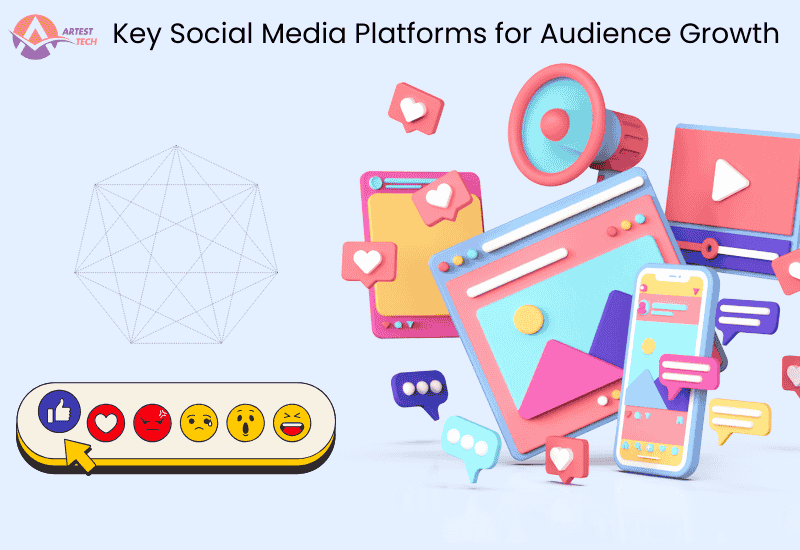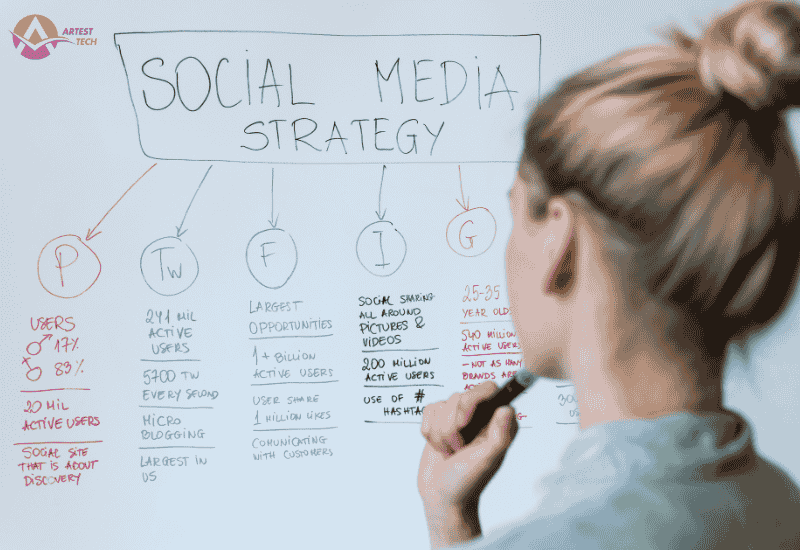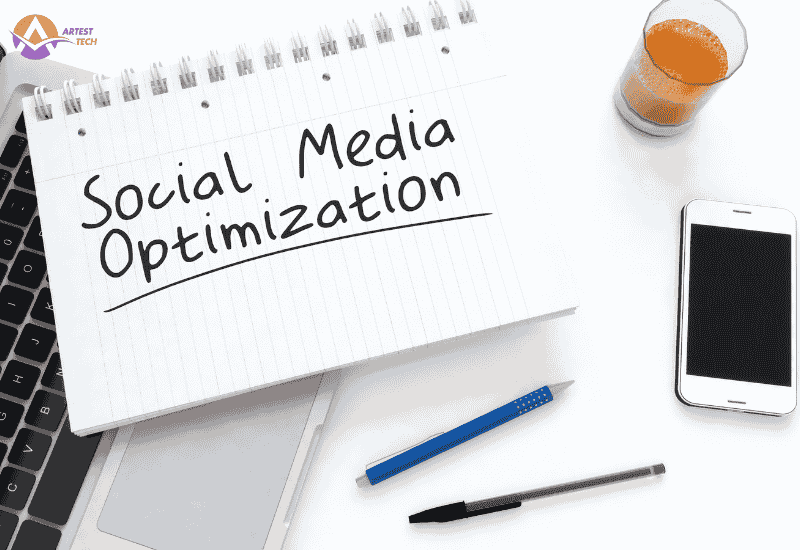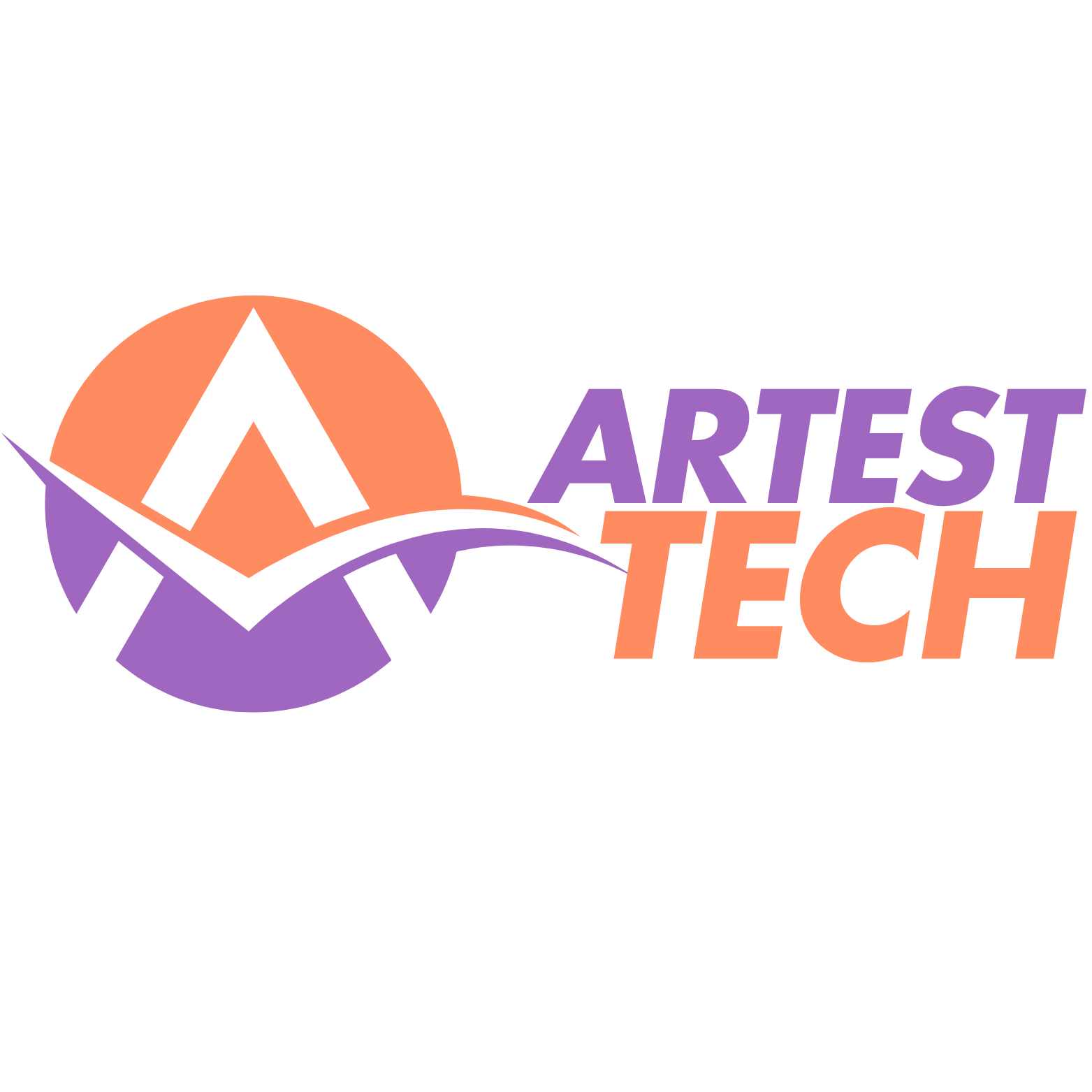
Social Media Management for Growing Your Audience
Introduction
Social media management is key to growing your audience and enhancing brand visibility across platforms like Instagram and Facebook. By creating engaging content, scheduling posts, and monitoring interactions, businesses can attract new followers. Active engagement, such as responding to comments and sharing valuable content, helps foster a loyal community. As a result, effective social media management not only increases your follower count but also boosts customer trust and brand credibility.
Moreover, tracking analytics plays a crucial role in refining strategies for better audience growth. By analyzing user behavior and engagement metrics, social media managers can adjust content to target specific demographics. This data-driven approach ensures content reaches the right people at the right time. Therefore, consistent and strategic social media management is essential for building a strong, engaged audience and achieving long-term business success.
What is Social Media Management?
Social media management is the process of creating, scheduling, and analyzing content across social platforms to engage audiences. It involves using various tools to plan and schedule posts, monitor interactions, and track performance. Effective management ensures that brands stay consistent with their messaging while engaging followers in meaningful ways. By leveraging analytics, social media managers can assess engagement, optimize strategies, and grow their audience over time. As a result, social media management helps to strengthen brand presence and drive business goals forward.
Moreover, social media management involves responding to comments, addressing concerns, and building relationships with your community. This real-time interaction builds trust and loyalty, which are essential for long-term success. Through social listening, brands can also stay on top of trends and adapt to audience needs. Social media managers use data to refine their strategies, ensuring content reaches the right people at the right time. Therefore, social media management is critical for businesses aiming to grow their presence and maintain customer satisfaction.

How to Use Social Media Scheduling Tools to Save Time
Social media scheduling tools are essential for saving time and ensuring consistency in your content posting across platforms. By planning and scheduling posts in advance, you can maintain an active presence without having to post manually every day. Tools like Hootsuite, Buffer, and Sprout Social allow you to schedule content for multiple platforms at once, increasing efficiency. Moreover, scheduling content ahead of time enables you to focus on other important tasks, such as engaging with your audience. As a result, businesses can maintain a consistent posting schedule and improve their content strategy. Therefore, using scheduling tools is a must for businesses looking to optimize their social media efforts.
In addition, social media scheduling tools provide valuable analytics that help you track performance and adjust your strategy. By analyzing the best times to post, you can schedule content when your audience is most active. This ensures higher engagement rates and better visibility. Furthermore, using these tools helps streamline your workflow by allowing you to manage posts, comments, and messages in one place. As a result, businesses can save time and effort while improving their social media management. Therefore, incorporating social media scheduling tools into your strategy is crucial for efficient content management and audience growth.
The Role of Zoho and Buffer to Manage Social Media Scheduling
Zoho and Buffer are two powerful tools that help businesses efficiently manage social media scheduling across multiple platforms. With Zoho Social, businesses can schedule posts, monitor engagement, and track performance with detailed analytics. By automating posts, Zoho saves time and ensures a consistent content strategy. On the other hand, Buffer is known for its user-friendly interface, allowing users to schedule content, track analytics, and collaborate within teams. As a result, both tools streamline social media management and help businesses maintain an active presence. Therefore, integrating Zoho and Buffer into your strategy can enhance social media efficiency and reach.
Moreover, Buffer’s ability to schedule posts in advance and customize content for different platforms ensures maximum engagement. Zoho’s robust reporting features also allow businesses to measure the success of their posts and optimize strategies. By analyzing data, social media managers can refine their approach and improve audience targeting. As a result, businesses can increase engagement and drive better results. Therefore, using Zoho and Buffer for social media scheduling is an essential part of any efficient digital marketing strategy.
The Importance of Growing Your Audience on Social Media
Growing your audience on social media is crucial for increasing brand visibility and expanding your online reach. Platforms like Facebook, Instagram, and Twitter offer unique opportunities to connect with millions of potential customers. By consistently sharing valuable content and engaging with followers, you can build a strong online community that drives business growth. Furthermore, a larger audience helps to improve brand credibility and fosters trust, which is vital in today’s competitive market. As your audience grows, your chances of converting followers into loyal customers also increase, leading to better sales and brand loyalty.
Moreover, social media platforms provide valuable insights and data that can help optimize your growth strategies. By analyzing user behavior and engagement metrics, you can refine your approach and target the right audience. This data-driven strategy allows you to stay relevant and responsive to your followers’ needs. As a result, growing your audience on social media is not just about increasing numbers—it’s about creating lasting relationships. Therefore, investing in social media growth should be a priority for any brand aiming to achieve long-term success.

Key Social Media Platforms for Audience Growth
To grow your audience, it’s essential to leverage key social media platforms like Facebook, Instagram, Twitter, and LinkedIn. Each platform offers unique features, enabling you to connect with different demographics. For instance, Instagram’s visual appeal helps brands engage younger audiences, while LinkedIn is ideal for professional networking and B2B growth. Moreover, Facebook’s targeted advertising tools allow businesses to reach specific groups, driving relevant traffic. As a result, choosing the right platform for your audience is critical for maximizing engagement and achieving long-term success. Therefore, understanding each platform’s strengths ensures that your social media management efforts are effective and impactful.
Facebook remains one of the most powerful platforms for growing your audience and engaging with potential customers. With over 2.8 billion active users, businesses can target specific demographics through highly customizable advertising options. By creating compelling content, sharing posts, and running targeted ads, brands can significantly increase their reach. Furthermore, Facebook’s engagement features, such as comments and reactions, help build a community around your brand. As a result, a well-managed Facebook strategy can drive traffic, increase conversions, and foster brand loyalty. Therefore, businesses should prioritize Facebook as a key platform for audience growth and long-term success.
Instagram is a powerful platform for growing your audience by sharing engaging visuals and stories that capture attention. With over 1 billion active users, Instagram allows businesses to target specific demographics through hashtags and ads. By posting regularly and interacting with followers, brands can increase their reach and build a loyal community. Moreover, Instagram’s features like Stories, Reels, and IGTV help boost engagement and keep your content fresh. As a result, businesses can effectively connect with a wider audience and drive conversions. Therefore, Instagram is a must-use platform for brands aiming to grow their presence and achieve success.
Linkdin
LinkedIn is a powerful platform for professional networking and growing your audience within specific industries or niches. By sharing insightful content, participating in discussions, and connecting with industry leaders, businesses can increase visibility. Moreover, LinkedIn’s targeted advertising tools allow brands to reach professionals based on their skills, job titles, and interests. As a result, companies can attract high-quality leads and foster business relationships. Therefore, LinkedIn should be an essential part of any B2B social media strategy, helping brands expand their reach and establish thought leadership.
Pinterest is an effective platform for visual discovery, helping businesses grow their audience by sharing captivating images and ideas. With over 450 million active users, brands can reach a broad audience through targeted pins and boards. By creating keyword-rich pins and leveraging trends, businesses can increase visibility and drive traffic to their websites. Moreover, Pinterest’s algorithm promotes content based on user interests, ensuring your posts are seen by the right people. As a result, Pinterest is a powerful tool for both e-commerce and brand awareness. Therefore, businesses should incorporate Pinterest into their social media strategy to maximize growth.
Twitter (X)
Twitter is a dynamic platform for engaging with a broad audience, allowing brands to share timely, relevant content. With over 330 million active users, businesses can increase their reach by using hashtags and participating in trending conversations. By posting regularly, responding to followers, and retweeting valuable content, brands can build a strong online presence. Furthermore, Twitter’s advertising tools allow brands to target specific audiences based on interests and behaviors. As a result, Twitter can drive traffic, foster engagement, and grow your brand’s audience. Therefore, Twitter should be a key part of your social media strategy for effective audience growth.

Effective Strategies for Growing Your Social Media Audience
To effectively grow your social media audience, it’s essential to create consistent, high-quality content that resonates with your followers. By posting regularly, engaging with comments, and using relevant hashtags, you can increase your reach. Moreover, leveraging visuals such as images, videos, and infographics can significantly boost engagement. Social media algorithms favor content that generates interaction, so focusing on engaging posts is crucial. As a result, businesses can build a loyal community and enhance brand awareness. Therefore, creating a content strategy tailored to your audience’s interests is vital for audience growth.
In addition, paid advertising is an effective tool for targeting specific audiences and boosting your content’s visibility. By running highly targeted ads on platforms like Facebook, Instagram, or LinkedIn, you can reach potential followers who match your ideal demographic. Social media managers can use data analytics to track performance and adjust ad strategies accordingly. As a result, ads can be optimized to achieve the best possible ROI. Therefore, combining organic content efforts with paid campaigns is a proven method for growing your audience faster.
Content Planning and Consistency
Content planning and consistency are key to growing your social media audience and maintaining engagement across platforms. By creating a content calendar, businesses can organize posts, ensure timely delivery, and align content with marketing goals. Moreover, consistent posting helps build brand recognition and trust with your audience. Social media algorithms also favor accounts that post regularly, increasing your visibility. As a result, a well-planned content strategy leads to sustained audience growth and higher engagement rates. Therefore, businesses should prioritize content planning and maintain consistency for long-term social media success.
Utilizing Hashtags for Reach
Utilizing hashtags effectively can significantly increase your social media reach and help your content get discovered by a broader audience. By researching trending and relevant hashtags, businesses can target specific demographics and interests. Moreover, using a mix of popular and niche hashtags ensures better visibility while reducing competition. Social media platforms like Instagram and Twitter rely on hashtags to categorize content, making it easier for users to find. As a result, businesses can attract more followers and engage with their target audience. Therefore, incorporating strategic hashtags in your posts is essential for maximizing reach and engagement.
Engaging with Your Audience
Engaging with your audience is crucial for building strong relationships and fostering loyalty across your social media platforms. By responding to comments, liking posts, and addressing feedback, businesses can show they value their followers. Moreover, actively engaging with your audience helps improve brand visibility and increases interaction rates. Social media algorithms reward accounts that engage regularly, boosting content reach. As a result, engaging with your audience leads to a more active and loyal community. Therefore, businesses should prioritize audience interaction to drive long-term success and growth on social media.

How to Optimize Your Social Media Profiles for Growth
Optimizing your social media profiles is essential for attracting and retaining followers, which leads to consistent audience growth. Start by ensuring your profile picture and bio clearly reflect your brand identity and values. By using relevant keywords in your bio and profile description, you can make your account more discoverable to your target audience. Moreover, a clear call-to-action (CTA) in your profile encourages visitors to take the next step, whether it’s visiting your website or following you. As a result, a well-optimized profile helps increase visibility and engagement. Therefore, profile optimization should be a priority for businesses aiming to grow their social media presence.
Additionally, consistency across all platforms is key to brand recognition and audience trust. Make sure your profile name, handle, and visuals are uniform across all social media channels. By linking your social media profiles to your website and other platforms, you can drive traffic and cross-promote content. Social media platforms reward complete and accurate profiles, which improve your chances of reaching new followers. As a result, maintaining a cohesive and well-optimized profile is vital for long-term growth. Therefore, regularly update your profiles to reflect new offerings, promotions, and brand changes.
Crafting an Attractive Bio
Crafting an attractive bio is essential for making a strong first impression and attracting the right audience. By clearly stating your brand’s mission, values, and what you offer, visitors can quickly understand your purpose. Additionally, incorporating relevant keywords will help improve your profile’s searchability, making it easier for your target audience to find you. Social media platforms prioritize profiles with complete information, so be sure to include a compelling call-to-action (CTA). As a result, an optimized bio can drive more engagement and conversions. Therefore, regularly updating your bio ensures it reflects your brand’s latest offerings and initiatives.
Profile Picture and Banner Optimization
Profile picture and banner optimization are crucial for creating a strong visual identity that attracts followers and builds trust. By using high-quality, relevant images that reflect your brand’s personality, you can make a lasting impression. Additionally, ensure that your profile picture is clear and easily recognizable across all devices, while your banner reinforces your messaging. Social media platforms often prioritize profiles with professional visuals, improving their visibility. As a result, optimizing these elements can increase engagement and help you stand out. Therefore, regularly updating your profile picture and banner is essential for maintaining a fresh, professional presence.
Linking to Your Website or Landing Pages
Linking to your website or landing pages is crucial for driving traffic and converting social media followers into customers. By adding clear and compelling calls-to-action (CTAs) in your posts, you can guide followers to your website. Moreover, ensure that the links are placed strategically in your profile bio, posts, and stories for maximum visibility. Social media platforms reward profiles that drive external traffic, which can improve your search engine rankings. As a result, linking to your website or landing pages helps generate leads and increase conversions. Therefore, consistently including these links in your content is essential for long-term business growth.
Using Analytics to Track Audience Growth
Using analytics to track audience growth is essential for understanding how your content performs and improving your strategy. By monitoring key metrics such as engagement rate, follower growth, and reach, you can measure the effectiveness of your social media efforts. Moreover, analytics tools provide insights into your audience’s demographics, helping you target the right groups. As a result, you can tailor your content to match audience preferences, improving engagement and fostering loyalty. Therefore, tracking these metrics regularly allows you to adjust your strategy and stay aligned with your growth goals.
In addition, most social media platforms offer built-in analytics tools that provide real-time data on audience behavior and trends. By analyzing this data, businesses can identify which content resonates best with followers and which posts need improvement. Social media managers can use this information to optimize content scheduling, refine hashtags, and increase overall reach. As a result, businesses can maximize their social media ROI by focusing on high-performing content. Therefore, using analytics to track audience growth is crucial for sustained success on social media.
Common Mistakes to Avoid in Social Media Management
One of the most common mistakes in social media management is inconsistency in posting. By failing to maintain a regular schedule, businesses risk losing engagement and visibility. Social media algorithms favor active accounts, so posting inconsistently can lead to reduced reach. Moreover, neglecting to interact with followers, such as not responding to comments or messages, can damage brand reputation. As a result, businesses may struggle to build meaningful relationships with their audience. Therefore, consistency and engagement are crucial for maintaining a strong online presence and achieving long-term success.
Additionally, another mistake to avoid is failing to track and analyze social media performance. Without monitoring key metrics such as engagement rates, follower growth, and conversions, businesses cannot determine what’s working or needs improvement. By not using analytics tools, you may miss opportunities to refine your strategy. As a result, your content may not align with your audience’s preferences, affecting engagement and growth. Therefore, regularly reviewing performance data and adjusting your approach is essential for effective social media management.
The Role of Social Media Influencers in Growing Your Audience
Social media influencers play a crucial role in growing your audience by expanding brand reach and fostering trust with followers. By partnering with influencers, businesses can tap into their established communities and gain access to a broader, more engaged audience. Influencers create authentic content that resonates with their followers, which increases credibility and encourages conversions. Moreover, influencer collaborations can generate social proof, driving more traffic to your brand’s profiles or website. As a result, influencer marketing helps businesses build brand awareness and grow their audience quickly. Therefore, leveraging influencers is an effective strategy for accelerating audience growth and boosting engagement.
Conclusion Building a Sustainable Social Media Audience
Building a sustainable social media audience requires consistent effort, valuable content, and strategic engagement with your followers. By understanding your audience’s preferences and creating content that resonates with them, you can foster long-term relationships and trust. Moreover, regularly analyzing performance metrics helps refine your strategy and ensure that your content stays relevant. Social media platforms reward active accounts, so maintaining a consistent posting schedule is essential for staying visible. As a result, your audience will continue to grow, engage, and advocate for your brand. Therefore, focusing on building a sustainable, loyal audience should be a top priority for any business or brand.
